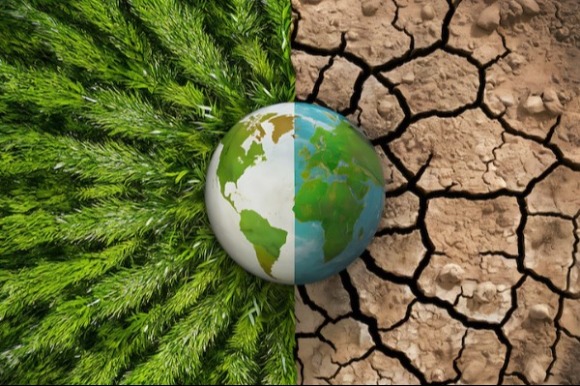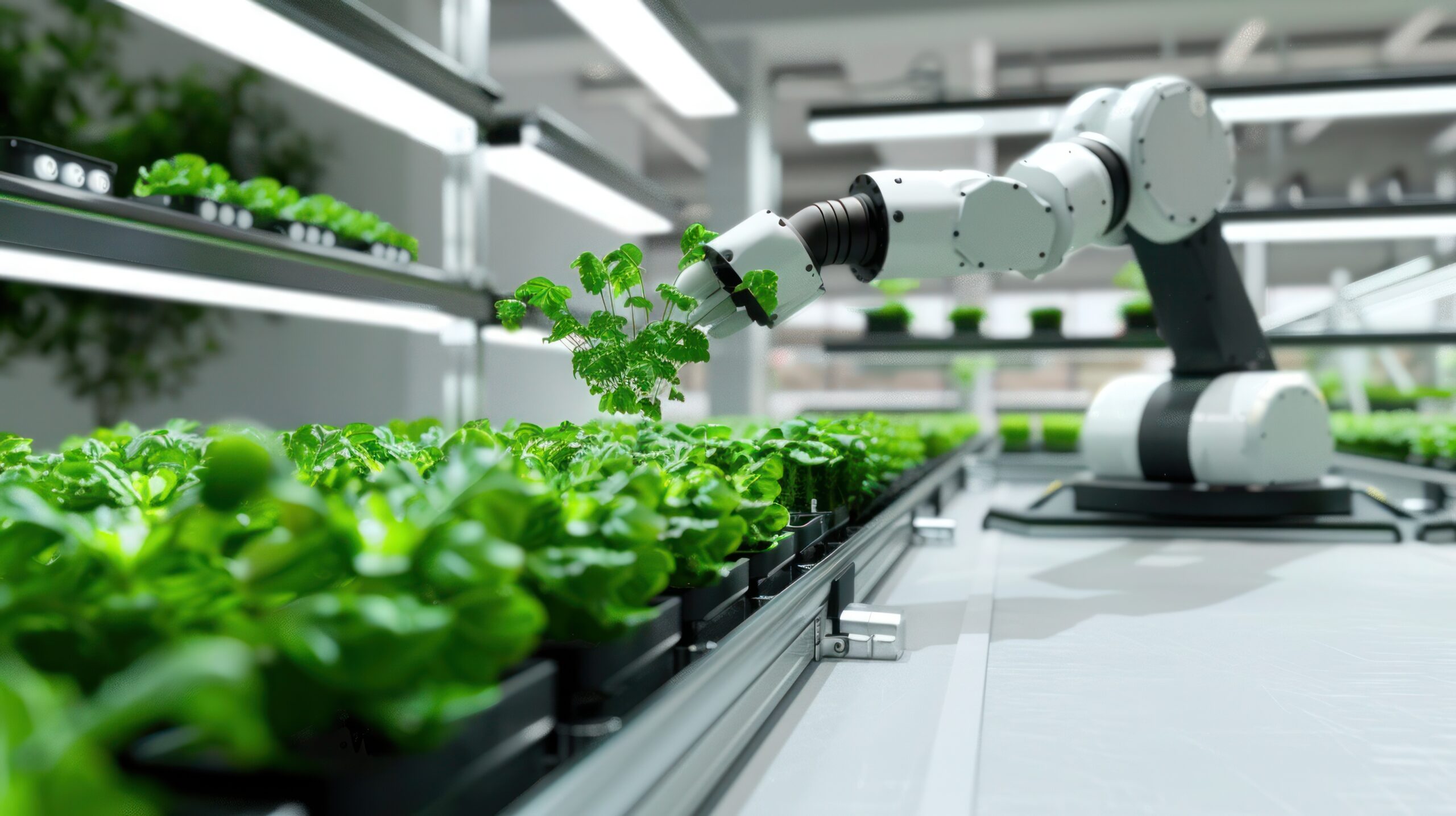Rising food prices driven by climate crisis threaten world’s poorest, report finds – The Guardian

Report on Climate-Induced Food Price Volatility and its Impact on Sustainable Development Goals
Introduction
A new research report highlights the increasing frequency and intensity of food price shocks directly attributable to climate change. An analysis conducted by a consortium including the UK’s Energy & Climate Intelligence Unit (ECIU), the European Central Bank (ECB), and the Potsdam Institute for Climate Impact Research reveals that extreme weather events are causing unprecedented price surges for staple foods globally. These developments pose a direct and significant threat to global food security, economic stability, and the successful achievement of multiple Sustainable Development Goals (SDGs).
Key Findings: The Link Between Extreme Weather and Food Inflation
The study, which investigated examples across 18 countries between 2022 and 2024, establishes a clear correlation between climate extremes and food price inflation. Key findings include:
- Unprecedented Weather Events: Price spikes were consistently associated with heat, drought, and heavy precipitation events that “exceeded all historical precedent prior to 2020.”
- Global Impact on Staples: The report documents several instances of severe price increases, including:
- A 300% spike in global cocoa prices following drought and extreme heat in Ghana and Ivory Coast.
- Significant price surges for potatoes in the UK.
- Increased prices for cabbages in South Korea.
- Sharp inflation for onions in India.
- Economic Consequences: Food price inflation contributes significantly to overall inflation, complicating macroeconomic management and potentially delaying interest rate cuts.
Implications for Sustainable Development Goals (SDGs)
The report’s findings underscore a critical challenge to the 2030 Agenda for Sustainable Development. The impacts of climate-driven food price shocks cut across numerous goals.
SDG 2: Zero Hunger
- Price volatility directly undermines food security by making essential foods unaffordable for millions.
- The resulting shortages and access issues lead to increased malnutrition, particularly among the most vulnerable communities, directly contravening the goal of ending hunger and ensuring access to nutritious food.
SDG 1: No Poverty & SDG 10: Reduced Inequalities
- Food price shocks disproportionately impact the poorest households, which spend a larger percentage of their income on food.
- This dynamic exacerbates poverty and widens the inequality gap, as low-income families are pushed further into economic distress while trying to meet basic needs.
SDG 3: Good Health and Well-being
- When staple food prices rise, low-income households are often forced to cut back on more expensive, nutritious items like fruits and vegetables, resorting to cheaper, less healthy alternatives.
- Such dietary shifts are linked to a higher prevalence of non-communicable diseases, including diabetes, heart disease, and cancer, jeopardizing public health outcomes.
SDG 13: Climate Action
- The report serves as a stark reminder that climate change is the root cause of this escalating crisis.
- It reinforces the critical urgency of global efforts to achieve net-zero emissions, as experts warn that extreme weather and its impact on food systems will continue to worsen until climate change is effectively addressed.
SDG 16: Peace, Justice and Strong Institutions
- The report notes that food price inflation is inherently political and can be a potent driver of social and political instability.
- Historical examples, such as protests in Mozambique following a spike in wheat prices, demonstrate the potential for food shortages to lead to social unrest. Furthermore, high inflation can directly influence election outcomes, affecting the stability of democratic institutions.
Conclusion and Outlook
The evidence presented in the report confirms that climate change is actively destabilizing global food systems, with severe consequences for human well-being and international development objectives. The interconnected impacts on poverty, hunger, health, and political stability highlight the systemic nature of the threat. As world leaders prepare for the UN Food Systems Summit Stocktake, these findings provide a critical impetus for integrating robust climate action into global food security strategies to safeguard the Sustainable Development Goals.
Analysis of Sustainable Development Goals (SDGs) in the Article
1. Which SDGs are addressed or connected to the issues highlighted in the article?
-
SDG 1: No Poverty
- The article directly links the impact of climate-induced food price shocks to the most economically vulnerable populations. It states, “the world’s poorest are hit by shortages of food staples” and highlights how “low-income households” are forced to alter their consumption patterns, which exacerbates their precarious financial situation.
-
SDG 2: Zero Hunger
- This is a central theme. The article discusses threats to “local food security,” the rise of “malnutrition,” and “shortages of food staples” due to climate change. The entire discussion revolves around the stability and accessibility of the “global food system.”
-
SDG 3: Good Health and Well-being
- The article establishes a clear connection between food prices and public health. It notes that high prices force low-income families to “resort to less nutritious, cheaper foods,” which are explicitly “linked to a range of health conditions like cancer, diabetes and heart disease.”
-
SDG 8: Decent Work and Economic Growth
- The economic consequences of food price spikes are highlighted. The article mentions that these spikes “can have a wider economic impact, making it harder for economies to keep down overall inflation and so, for example, bring interest rates down,” which affects macroeconomic stability and growth.
-
SDG 10: Reduced Inequalities
- The article underscores the disproportionate impact of climate change and food inflation on different segments of society. By stating that “the world’s poorest are hit” the hardest, it points to a widening gap between the rich and poor, thereby increasing inequality.
-
SDG 13: Climate Action
- The article identifies climate change as the root cause of the problem. It explicitly refers to “Climate change-induced food price shocks” and links them to “weather extremes” such as “heat, drought and heavy precipitation.” The solution proposed is to “get to net zero emissions.”
-
SDG 16: Peace, Justice and Strong Institutions
- The article connects food price inflation to social and political instability. It suggests that these shocks can lead to “political upheaval and social unrest” and can “directly alter election outcomes in modern democracies,” threatening peaceful societies and stable institutions.
2. What specific targets under those SDGs can be identified based on the article’s content?
-
Under SDG 1 (No Poverty):
- Target 1.5: By 2030, build the resilience of the poor and those in vulnerable situations and reduce their exposure and vulnerability to climate-related extreme events and other economic, social and environmental shocks and disasters. The article’s focus on how the “world’s poorest are hit” by climate-induced food shortages directly relates to this target.
-
Under SDG 2 (Zero Hunger):
- Target 2.1: By 2030, end hunger and ensure access by all people, in particular the poor and people in vulnerable situations, to safe, nutritious and sufficient food all year round. The article’s discussion of “food security,” “shortages of food staples,” and price spikes directly addresses the challenge of ensuring access to food.
- Target 2.2: By 2030, end all forms of malnutrition. The article explicitly mentions that price shocks could lead to more “malnutrition.”
- Target 2.4: By 2030, ensure sustainable food production systems and implement resilient agricultural practices. This target is implied as the solution to crop damage caused by “heat, drought and heavy precipitation.”
-
Under SDG 3 (Good Health and Well-being):
- Target 3.4: By 2030, reduce by one third premature mortality from non-communicable diseases through prevention and treatment. The article links the consumption of “less nutritious, cheaper foods” (due to high prices) to non-communicable diseases like “cancer, diabetes and heart disease.”
-
Under SDG 13 (Climate Action):
- Target 13.1: Strengthen resilience and adaptive capacity to climate-related hazards and natural disasters in all countries. The article demonstrates a lack of resilience in the food system to “weather extremes that ‘exceeded all historical precedent’.”
-
Under SDG 16 (Peace, Justice and Strong Institutions):
- Target 16.1: Significantly reduce all forms of violence and related death rates everywhere. This is relevant through the article’s warning that food price shocks can lead to “political upheaval and social unrest,” as seen in Mozambique.
3. Are there any indicators mentioned or implied in the article that can be used to measure progress towards the identified targets?
-
Food Price Volatility/Inflation:
- The article provides concrete examples of “surges in the price of potatoes in the UK, cabbages in South Korea, onions in India, and cocoa in Ghana.” The “global prices for the commodity [cocoa] spiking by 300%” is a specific indicator of price volatility. This can be used to measure progress towards targets under SDG 1 and SDG 2.
-
Prevalence of Malnutrition:
- The article’s statement that price shocks “could lead to more malnutrition” implies that the prevalence of malnutrition is a key indicator for measuring the impact on food security and health (SDG 2, SDG 3).
-
National Inflation Rate:
- The text mentions that food price spikes drove “unexpectedly high UK inflation figures” and made it “harder for economies to keep down overall inflation.” This makes the national inflation rate a relevant indicator for economic stability (SDG 8).
-
Frequency and Intensity of Extreme Weather Events:
- The article attributes price shocks to “weather extremes” like “unprecedented monthly temperatures,” “drought,” and “heavy precipitation.” Tracking these events serves as an indicator for climate-related hazards (SDG 13).
-
Incidence of Social Unrest:
- The mention of “political upheaval and social unrest,” with the specific example of people in Mozambique taking “to the streets when the price of bread shot up,” implies that the number of such incidents can be an indicator of social instability (SDG 16).
4. Summary Table of SDGs, Targets, and Indicators
| SDGs | Targets | Indicators |
|---|---|---|
| SDG 1: No Poverty | 1.5: Build resilience of the poor to climate-related extreme events and other shocks. | Price of staple foods; Impact of food price shocks on low-income household budgets. |
| SDG 2: Zero Hunger | 2.1: End hunger and ensure access to safe, nutritious food. 2.2: End all forms of malnutrition. 2.4: Ensure sustainable and resilient food production. |
Food price volatility (e.g., 300% spike in cocoa prices); Prevalence of malnutrition. |
| SDG 3: Good Health and Well-being | 3.4: Reduce premature mortality from non-communicable diseases. | Incidence of diet-related diseases (cancer, diabetes, heart disease). |
| SDG 8: Decent Work and Economic Growth | Maintain macroeconomic stability. | Overall inflation rate; Interest rates. |
| SDG 10: Reduced Inequalities | Address disproportionate impacts on vulnerable populations. | Disparity in food security between high and low-income groups. |
| SDG 13: Climate Action | 13.1: Strengthen resilience and adaptive capacity to climate-related hazards. | Frequency and intensity of extreme weather events (heat, drought, heavy precipitation); Greenhouse gas emissions (“net zero emissions”). |
| SDG 16: Peace, Justice and Strong Institutions | 16.1: Significantly reduce all forms of violence. | Incidence of food price-related social unrest and political upheaval. |
Source: theguardian.com

What is Your Reaction?
 Like
0
Like
0
 Dislike
0
Dislike
0
 Love
0
Love
0
 Funny
0
Funny
0
 Angry
0
Angry
0
 Sad
0
Sad
0
 Wow
0
Wow
0








































































